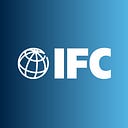Private Sector Innovation Offers Opportunities for Host Communities, Refugees
By Sérgio Pimenta
The world is witnessing record levels of displacement. The UN Refugee Agency estimates that nearly 20 people are forcibly displaced every minute. Today alone, tens of thousands of people are fleeing their homes because of conflict or persecution.
Humanitarian agencies typically tend to refugee and displaced populations. They provide daily subsistence through a “care and maintenance” approach that provides essential short-term relief. However, once classified as a refugee, a person may maintain that status for years, even generations.
Addressing changing refugee needs will involve long-term solutions in addition to the needed humanitarian relief. It requires a new development approach to help ease economic and social pressure on the communities that host refugees. Private sector participation and support will be critical.
In its more than six decades working with the private sector, IFC has seen how businesses can boost economic growth and spur livelihoods, even under the most challenging circumstances. Ninety percent of all jobs in the developing world are created by the private sector. With the right incentives and tools that reduce risks for investors, the private sector could do much more for host communities and refugees.
Traditionally, businesses have engaged with refugees and host communities through corporate social responsibility programs or by providing in-kind donations to humanitarian agencies and governments. A new paradigm envisions businesses doing much more.
Earlier this year, at the request by the UN Refugee Agency, IFC undertook a groundbreaking consumer and market study of the Kakuma refugee camp in Kenya. The study is the first to assess an African refugee camp as a marketplace. Researchers found that household spending in the 25-year-old camp and its neighboring town totals at least $56 million per year — half of which is spent on consumer goods such as food and personal-care items. The camp, home to 180,000 refugees as of March 2018, also has a vibrant informal private sector, including more than 2,000 shops run by refugees and Kenyans. Similarly, in Jordan’s Zaatari camp, the largest Syrian refugee camp, the UN estimates that businesses generate $13 million a month for the refugees and Jordanians business counterparts.
These findings make it clear what many in the humanitarian world have observed for years: refugees are not just passive recipients of aid, rather, they are employers, employees, producers, distributors, buyers, vendors, and consumers.
So how can companies innovate to work in this space? We are beginning to find examples. IFC is working with Jordanian company IrisGuard that produces e-payment systems based on iris scans, which enable refugees and displaced populations access cash and goods. Another IFC-financed company Luminus, provides refugees with technical and vocational skills to help them access jobs.
Microfinance is another promising area. One industry leader IFC is working with in Lebanon, Al-Majmoua, for example, has already increased access to microfinance in Lebanese host and Syrian refugee communities through more than 2,000 clients. It plans to increase access to very small enterprise borrowers from less than 300 clients to more than 3,000 by 2021.
These examples of private sector interventions that benefit both hosts and refugees and have potential to offer a new set of solutions and improve access to needed goods and services.
Obstacles need to be overcome to hasten investment in these communities. The first barrier to investment is basic: information. Companies lack the consumer and market data required to engage with displaced populations. IFC and UNHCR’s Kakuma study is a step towards bridging this gap. A second deterrent is risk. Businesses are wary of the high level of uncertainty involved in working with refugees and host communities. Local attention to making it easier to do business along with new approaches from development finance institutions can help reduce real and perceived risks.
Promoting refugee self-reliance will take innovation, integration with the host community, and continued resilience of people who have the courage to re-create their lives from scratch.
It will also take new partnerships — between governments, humanitarian agencies, development finance institutions, civil society and the private sector. Investors who are committing time and resources to refugees and host communities are seeing what is possible. With the right support, refugees can lay the foundations for economic growth in their host communities and, upon return, in their home countries.
Sérgio Pimenta is IFC Vice President, Middle East and Africa
